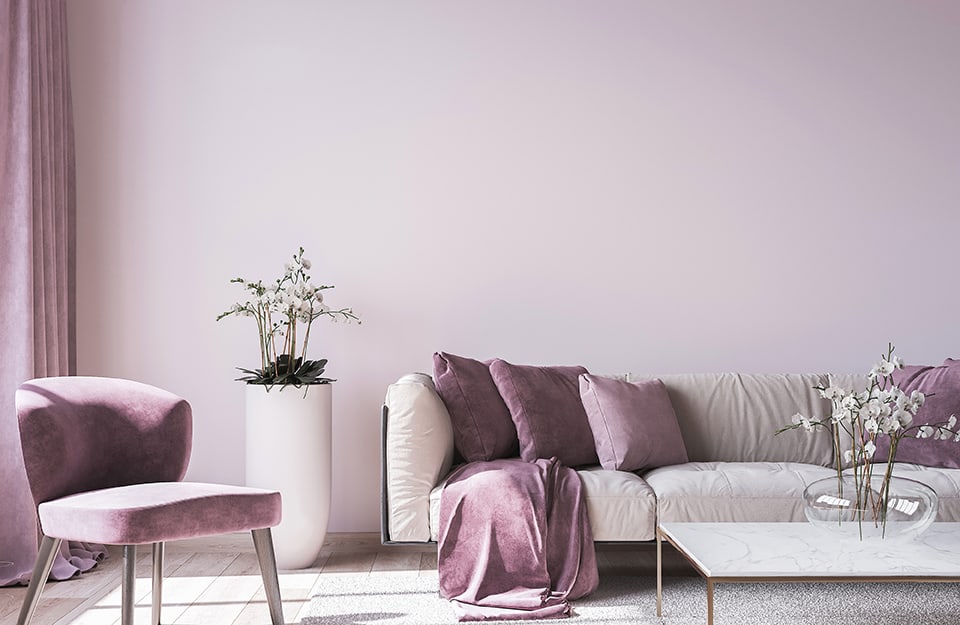When one thinks of pastel colours, ice cream cones, candies and candy floss come to mind. Macarons and sugar sprinkles. And then tender soft toys, dolls, fairies and unicorns; spring, joy, the green years of youth. But the delicate and reassuring tones of pastel colours are not only linked to the imagination of children. They have long since caught on in the worlds of fashion, graphics, design and interior design.
- A gallery of pastel colour inspirations
- What are pastel colours?
- Where are pastel colours used?
- A brief history of pastel colours in interior design
- What are pastel colours? And what is their meaning?
- How to do pastel colours?
- The 7 rules
- 1: combine pastel colours with neutral colours
- 2: combine pastel colours with dark colours
- 3: choose warm or cool tones
- 4: use only one or two pastel colours at a time
- 5: sometimes you can dare with more than two pastel colours
- 6: use the same pastel colour on several elements
- 7: pastel colours go well with any furnishing style
A gallery of pastel-coloured inspirations

Pastel colours make a room cosy. You can play with the same hue on different elements to give uniformity and elegance, as in this bright bedroom.
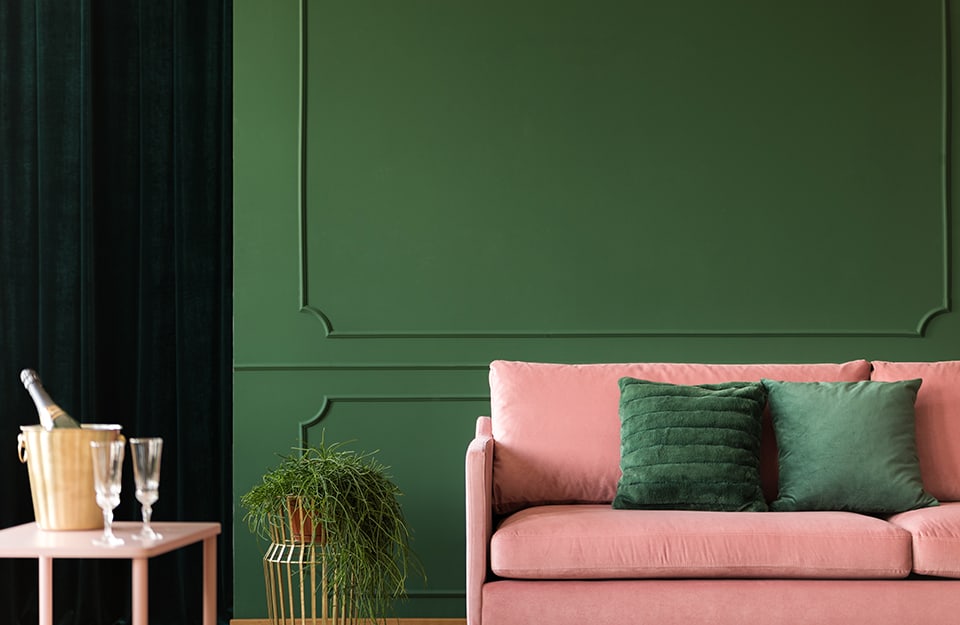
In a room dominated by dark colours, pastel shades help to lighten the atmosphere and brighten the room.
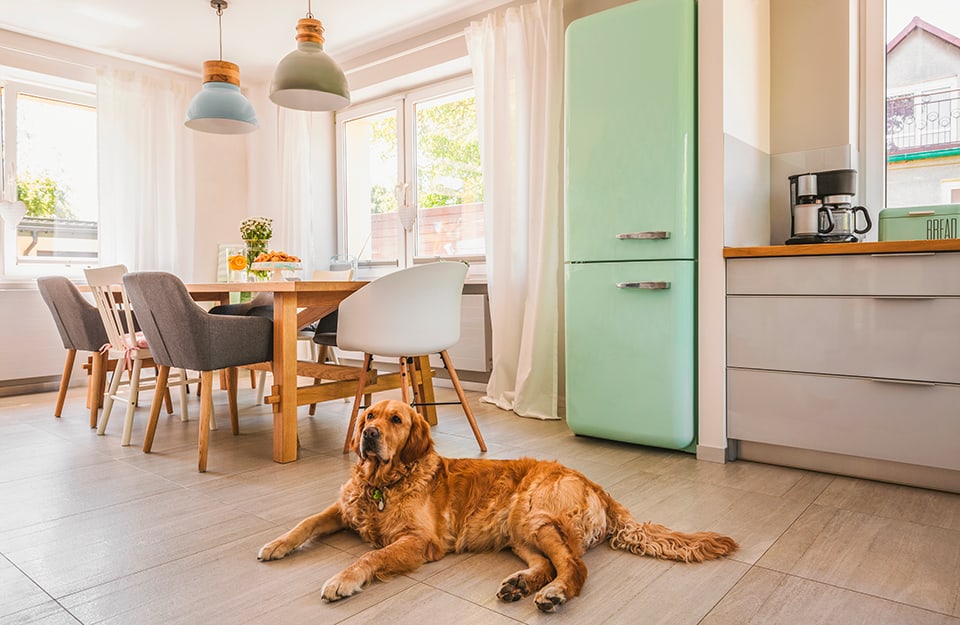
A minimal Scandinavian-style kitchen becomes cosier with a vintage refrigerator in pastel tones.
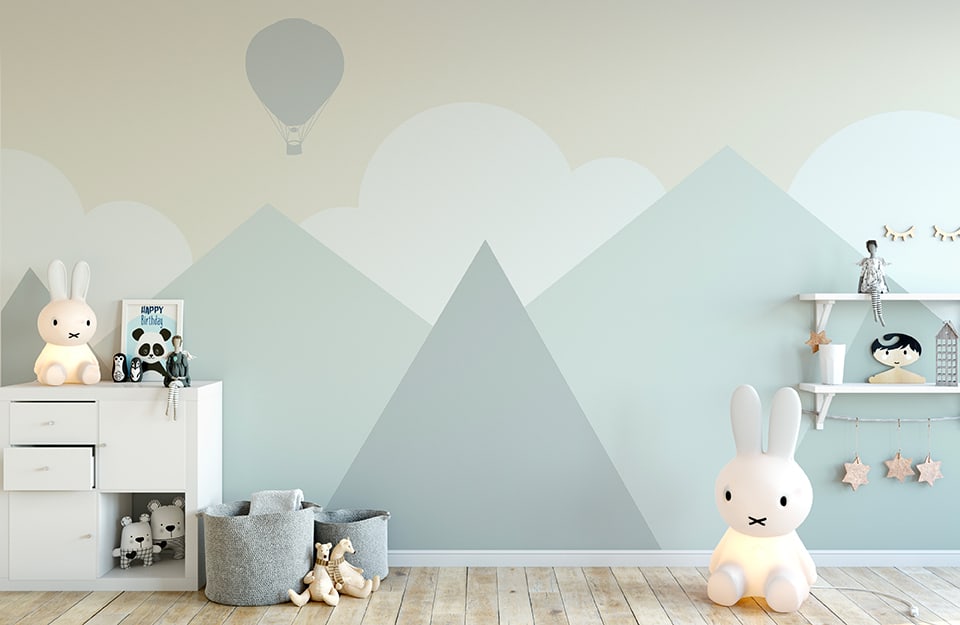
In the children’s room, pictures can be painted on the walls in pastel colours that will be relaxing and non-noisy, ideal for bedtime.

To renovate a bathroom inexpensively, it will suffice to paint one or more walls in a pastel colour, perhaps combining accessories of the same shade.
What are pastel colours?
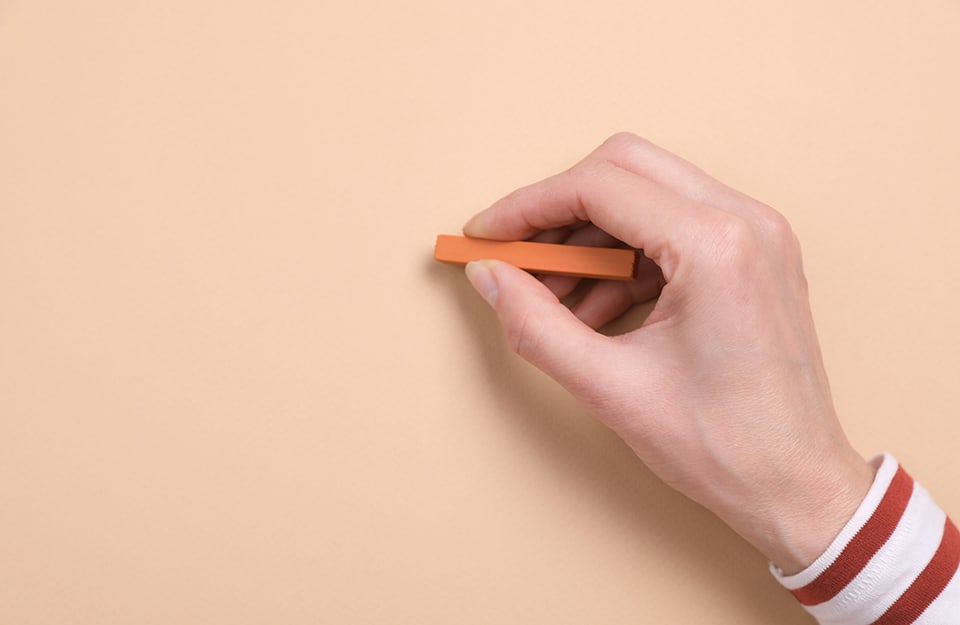
Usually, pastel colours are derived from primary and secondary colours to which white is added, thus reducing their intensity.
The main characteristics of pastel colours are:
- a low saturation: saturation is the intensity of a hue. Pastel colours, having a lower amount of pigments, are therefore more muted;
- high brightness: due to the strong presence of white;
- the softness: pastel shades are generally considered more ‘calm’ and harmonious than saturated colours, as they do not catch the eye in an aggressive manner.
Such colours are called pastels in reference to the so-called soft pastels, cylindrical or square coloured sticks produced by mixing pigment with a small amount of binder. These are used dry, pure, without the need to dilute them.
Where are pastel colours used?
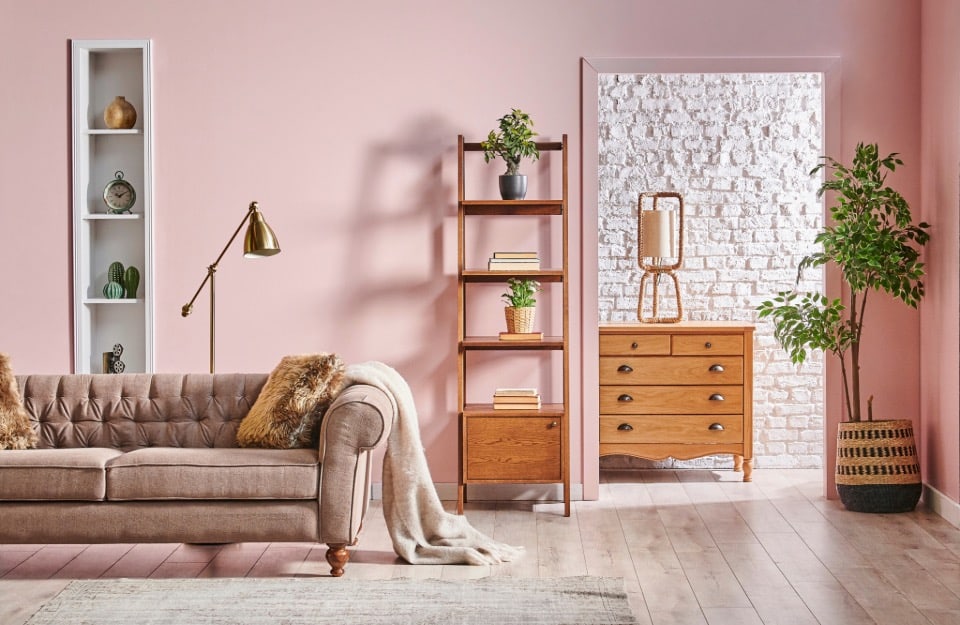
- Fashion: they are widely used in clothing, footwear and accessories, particularly in spring and summer, as they evoke lightness and freshness.
- Graphics: in graphics and advertising, pastel colours are used to communicate accessibility and kindness. Some brands – especially in recent times – choose pastel shades to create a feeling of familiarity and tranquillity, such as in the case of children’s products, cosmetics brands or wellness companies.
- Art: pastel colours have been and are still widely used in art, especially for works on paper such as drawings and sketches. Their delicacy makes them ideal for portraits and quiet scenes. In particular, the watercolour technique is closest to pastel shades.
- Interior design: long used in furniture design to create relaxing environments (i.e. mainly in relaxation rooms such as the bedroom and bathroom), they have now been ‘cleared through customs’ in every room of the home.
A brief history of pastel colours in interior design
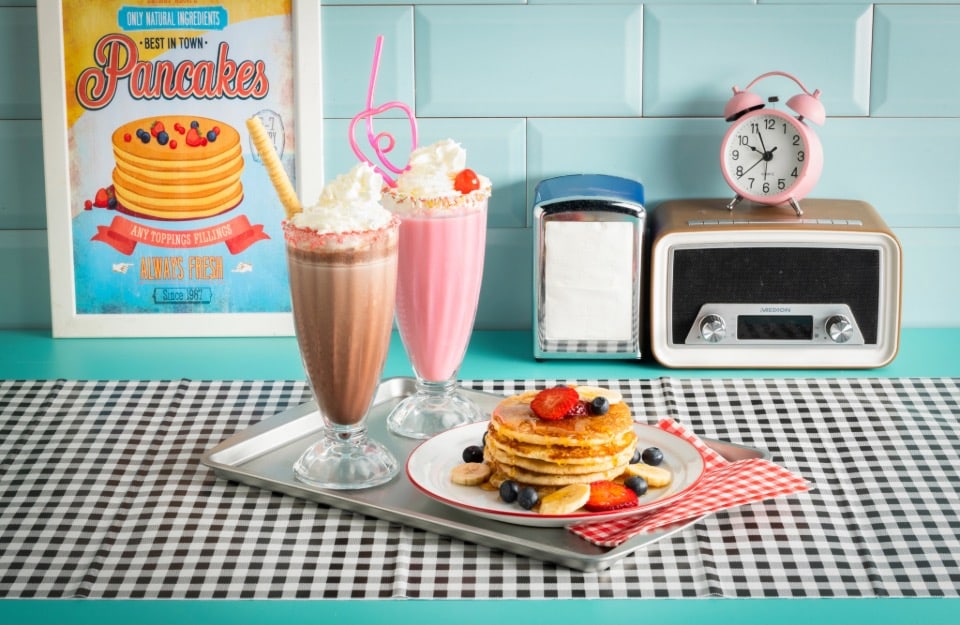
Although there is no shortage of older examples, it was in the 1950s that pastel colours conquered the world of interior design, becoming a symbol of modernity and optimism in home design. The post-war period brought with it a desire for renewal and lightness: families were looking for bright, cosy and colourful homes to celebrate the economic recovery and look to the future with positivity.
This trend manifested itself clearly in the colours chosen for walls, furniture and accessories: shades such as powder pink, powder blue, butter yellow and mint green made the atmosphere of domestic spaces joyful and at the same time reassuring. Kitchens, bathrooms and living rooms were filled with shiny surfaces in soft colours, reflecting the influence of new technologies and synthetic materials such as Formica, which made furniture easier to maintain and more accessible to all.
American culture, in particular, contributed to the spread of pastel colours through the classic diner with pink and mint green counters, and the coloured appliances that brought design directly into the home. This style became iconic and influenced not only the aesthetics of homes but also fashion and advertising.
More recently, thanks to the Instagram aesthetic and the success of certain furniture styles, pastel colours have made a strong comeback.
What are pastel colours? And what is their significance?
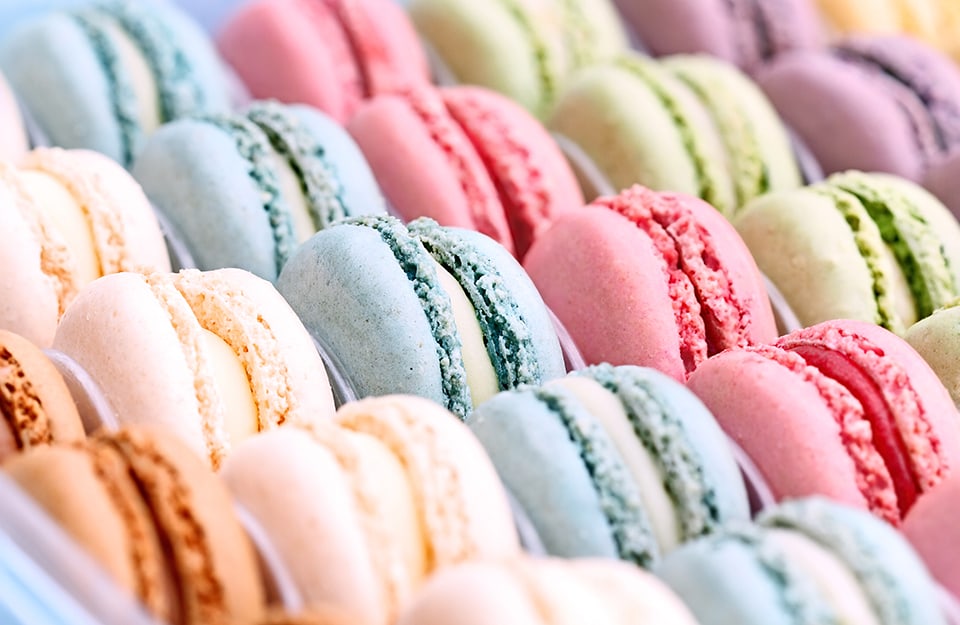
Here are the main pastel colours, together with the places and environments for which they are most suitable.
- Pastel blue: linked to lightness and tranquillity. It is reminiscent of the calm sea and is particularly suitable for bedrooms and bathrooms. It goes well with natural wood. It gives a romantic aura when combined with lace and antique ceramics.
- Pastel green: evokes calm and, like light blue, is enhanced by combination with natural wood, but also with light shades such as beige and cream. It can be used in many furnishing styles.
- Pastel orange: warmer, goes well with brown, wood and all those colours that recall the earth. It goes well in a rustic or industrial environment.
- Pastel yellow: unlike the saturated hue, it is a very easy colour to use. It represents joy and optimism, but without the aggressiveness of intense yellow. It is perfect for both indoor and outdoor environments (such as house walls), from baby’s bedrooms to modern living rooms.
- Pastel pink: associated with tenderness, love, and delicacy. It is widely used for bedrooms but also for living rooms. It is extremely versatile in both more modern and classical settings. It matches both wood and darker shades.
An exhaustive list of pastel colours is impossible to compile, but we can find lilac, mauve, aqua green, sage green, mint green, amethyst, apricot orange, peach pink and some shades of white (such asécru), grey (see pearl grey or fog grey) and brown (beige).
How to make pastel colours?
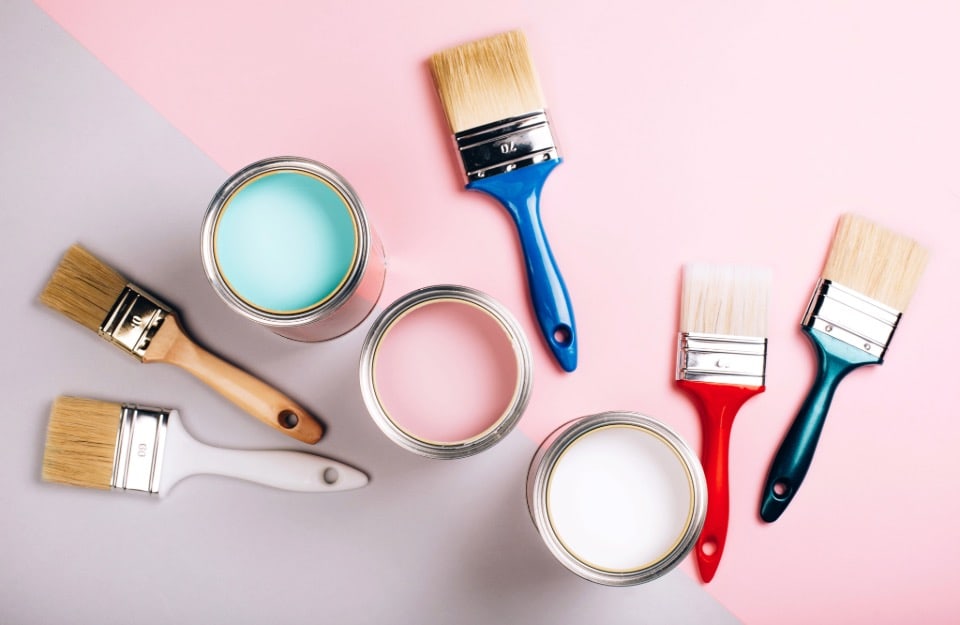
As already mentioned, pastel shades are achieved by adding varying (but still high) amounts of white. This can be done with various types of colour: tempera, oil, in enamels for painting walls and other materials.
The best pastel pa ints for decorating the home are from Rio Verde’s Vintage Prestige wood paint range, with a trendy colour palette.
These are textured-effect, highly opaque enamels that can be used on many different substrates: wood, metal, glass, plastic, fabric and small portions of wall.
They are easy to use and very practical, as they can also be applied without sanding or stripping.
Ready to use, they can be applied by brush, roller or spray.
They are also formulated in such a way that they do not harm the environment or the health of the user.
The colour palette of Vintage Prestige consists of 10 pastel shades – ranging from frappé pink to anise blue, from milky green to vanilla yellow – plus fiordilatte white and liquorice black, which can be used in combination with the other colours to achieve a practically infinite number of shades.
The 7 rules
1: Combining pastel colours with neutral colours
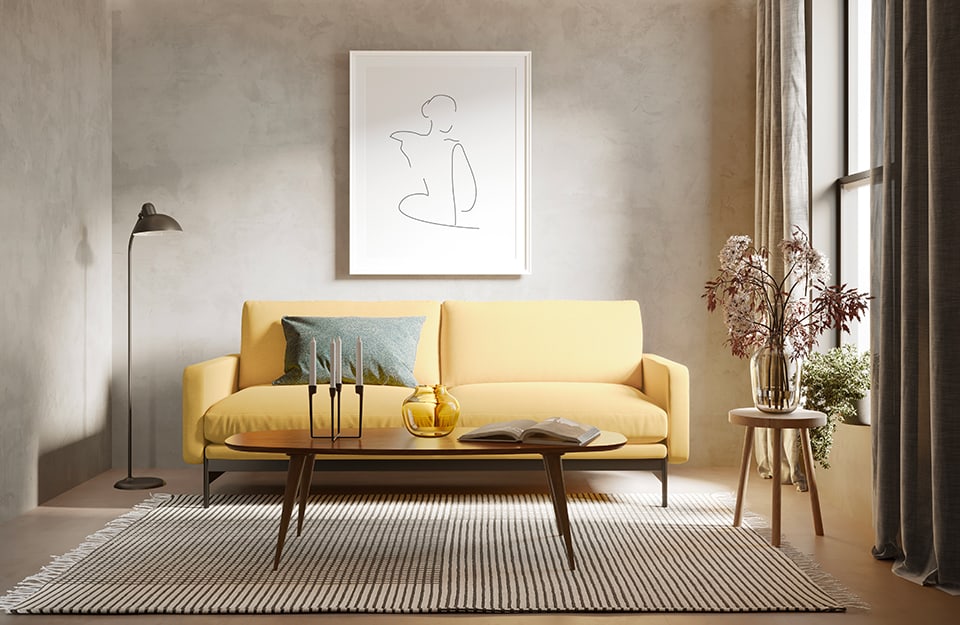
It is always a winning combination. Shades such as beige, cream, whites and greys give depth to pastel colours, with which they blend perfectly. This also avoids the so-called ‘wedding favour effect’, which can completely ruin a room by the overuse of soft colours.
2: Combining pastel and dark colours

Combining pastel colours with dark shades, for example for interior walls, can create an elegant and contemporary contrast, enriching the space with a mix of delicacy and depth. This combination can add personality and dynamism to rooms, creating sophisticated atmospheres, without losing the lightness of pastel tones.
Some combinations are well chosen:
-
- powder pink and anthracite grey for living room or bedroom;
- pastel yellow and chocolate brown for living room or entrance hall;;
- light peach and dark grey living room or kitchen;.
- mint green and black (matt) for dining room or kitchen;
- lavender or lilac and forest green for bedroom or living room;
- powder blue and navy blue for bathroom or study.
A tip to facilitate matching is to use neutral shades as ‘binders’, and metallic accents to provide a brighter feel.
3: Choose warm or cool tones

The choice between warm or cool pastel tones for furniture depends mainly on the atmosphere you want to create and the use of the room.
-
- Warm tones: they suggest intimacy and cosiness. They are ideal for living rooms, dining rooms, hallways and bedrooms. They go well with materials such as light wood and copper or brass details, which emphasise their softness.
They are more suitable for the ‘social areas’ of the home or to add a romantic and delicate touch. They are best suited in rooms that have little natural light, as warm tones can visually ‘brighten’ the room. - Cool tones: evoke feelings of freshness and calm. They are preferable in rooms that should be relaxing and uncluttered, such as the bathroom, bedroom, kitchen and study. They go well with cool metallic details such as silver and chrome, and materials such as glass and marble. If the room has plenty of natural light, it is better to opt for cool tones, which do not saturate the space.
In workplaces or small rooms, they give a sense of order and elegance.
- Warm tones: they suggest intimacy and cosiness. They are ideal for living rooms, dining rooms, hallways and bedrooms. They go well with materials such as light wood and copper or brass details, which emphasise their softness.
However, cold and warm pastel colours can be combined, e.g. a mint green (cold) with a light peach (warm), to achieve interesting contrasts. The addition of neutral tints such as white, beige or light grey can give balance to the room, as can natural materials.
4: use only one or two pastel colours at a time
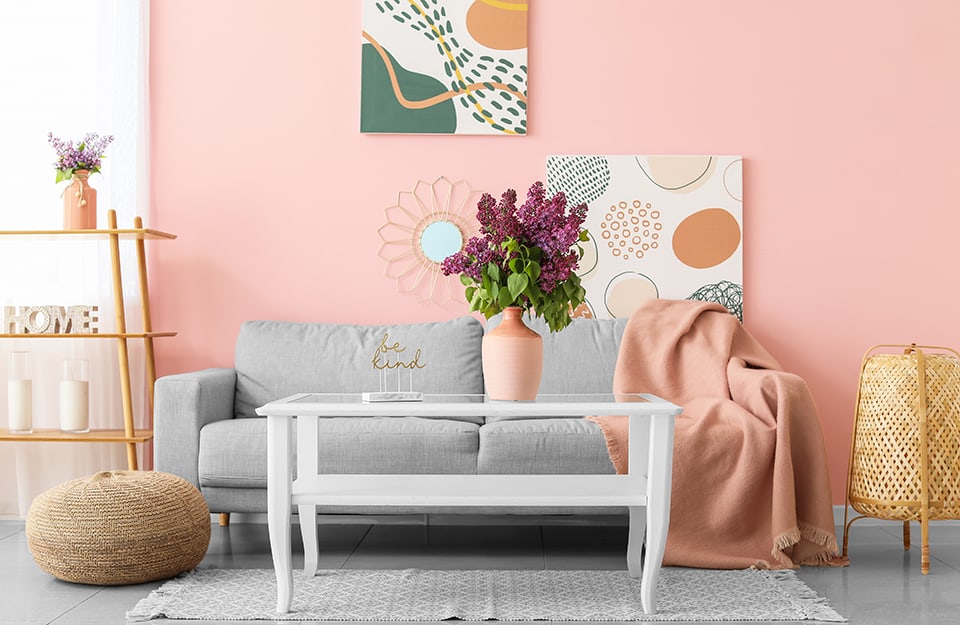
In the pursuit of colour harmony and balance, it is best to avoid using too many pastel colours in a room.
The advice is to evaluate the elements already present well and then choose the most suitable ones.
With dark wood furniture, for example, you could use orange and pastel green.
In a room where white or beige dominate, it is better to combine light blue and pastel red or, alternatively, lilac and pastel yellow. In bedrooms, however, it is important to go for the colour you find most relaxing, so the choice will be entirely personal – just don’t overdo it with too many shades.
The bathroom, on the other hand, is best enhanced with blue, green or pink (both for tiles and fabrics).
In the kitchen you can indulge in yellow and green, but also light blue, pink and pastel red (perhaps on lacquered fridges or wall units).
5: sometimes you can dare with more than two pastel colours
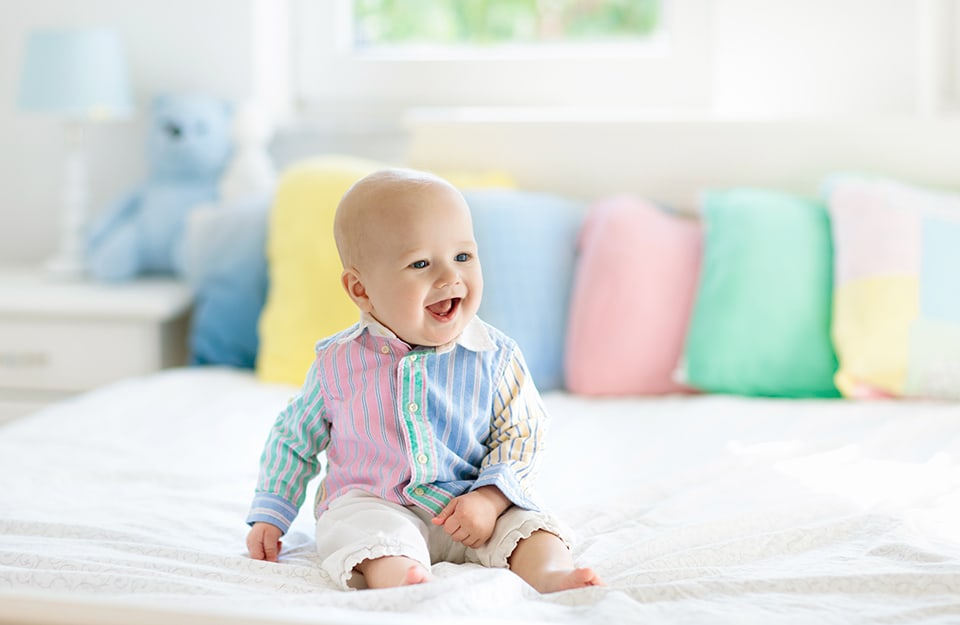
In a few special cases it is possible to break the previous rule, number 2.
The most obvious example is the children’s bedroom, where one can indulge without too many worries, in the name of cheerfulness and playfulness. In fact, the more colours the better.
This also applies, but only in some cases, to kitchens and living rooms. For example in large open spaces where spaces are blurred and there are many ‘focal points’. Avoid at all costs in rooms that are too small.
6: Using the same pastel shade on several elements

Calling up the same pastel colour in different areas of the room and on elements that differ in size, material and texture allows the room to be harmonised while creating dynamism and depth.
Once the colour has been chosen, it can be reproduced (without overdoing it) on furniture, accessories and walls. However, using it on different materials could be a problem. It is indeed difficult to find the same colour for fabrics and metal parts, wood and walls. However, Rio Verde’s Vintage Prestige line of paints comes to the rescue.
This is an extra-matt product that can be applied to wood, metal, glass, walls, fabric and plastic. This will make it easier to personalise objects and pieces of furniture that you already own, either new or bought at flea markets.
These range from milkshake (antique pink) to vanilla (pastel yellow), from milky (pastel green) to anise (pastel blue), plus neutral shades of brown (from hazelnut to marzipan).
7: Pastel colours go well with any furnishing style

If used sparingly and tastefully, pastel colours can enhance various furnishing styles: they enliven and brighten rooms that are too dark; they warm and humanise excessively minimal and cold rooms; they soften the ‘box’ effect of total white.
However, the trends with which pastel colours give the most satisfaction are shabby chic, Provençal, boho chic and cottagecore.
The delicacy of these colours, in fact, goes very well with the refinement of these styles, which are very much linked to vintage furniture and objects with a used and lived-in air, which with a couple of coats of Vintage Prestige can be transformed without too much difficulty into contemporary and impressive furnishings.
